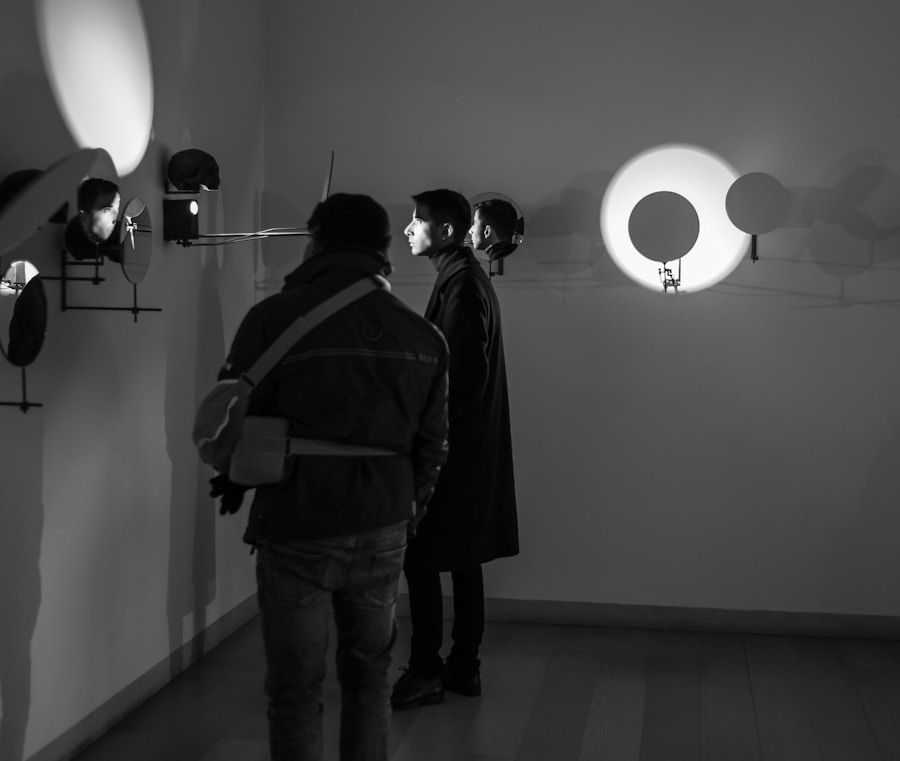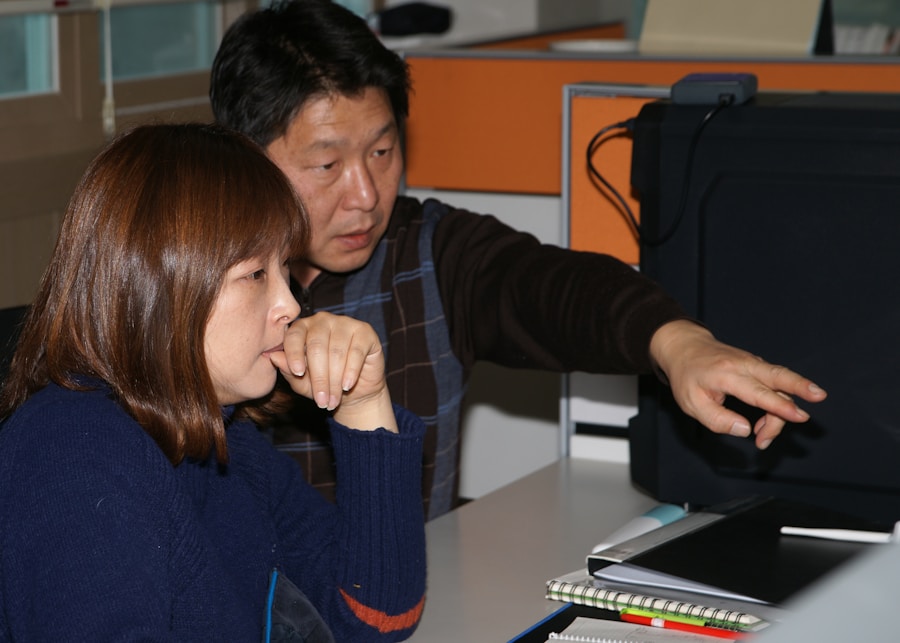Listening is often regarded as one of the most critical components of effective communication. It is not merely a passive activity; rather, it is an active process that requires concentration and engagement. When individuals listen attentively, they demonstrate respect for the speaker and validate their thoughts and feelings.
This validation fosters a sense of trust and openness, which is essential for meaningful dialogue. In both personal and professional contexts, the ability to listen effectively can lead to improved relationships, enhanced collaboration, and a deeper understanding of diverse perspectives. Moreover, listening plays a pivotal role in conflict resolution.
When parties involved in a disagreement feel heard, they are more likely to engage in constructive discussions rather than resorting to defensiveness or aggression. For instance, in a workplace setting, a manager who actively listens to an employee’s concerns about workload can address the issue more effectively than one who dismisses the employee’s feelings. By acknowledging the employee’s perspective, the manager not only resolves the immediate concern but also strengthens the employee’s loyalty and commitment to the organization.
Thus, listening is not just about hearing words; it is about creating an environment where individuals feel valued and understood.
Key Takeaways
- Active listening is crucial for effective communication and building strong relationships.
- Eye contact is a powerful tool for establishing connections and conveying interest and understanding.
- Strategies for active listening include maintaining eye contact, asking clarifying questions, and providing feedback.
- To improve eye contact, practice maintaining steady eye contact for a few seconds at a time and be mindful of blinking and looking away.
- Barriers to effective listening, such as distractions and preconceived notions, can be overcome through mindfulness and active engagement.
- Using eye contact can enhance engagement by showing attentiveness and building rapport with the speaker.
The Power of Eye Contact in Building Connections
Eye contact is a fundamental aspect of nonverbal communication that significantly influences interpersonal interactions. It serves as a powerful tool for establishing connections between individuals, conveying sincerity, and fostering intimacy. When people maintain eye contact during conversations, it signals that they are engaged and interested in what the other person is saying.
This engagement can enhance the quality of interactions, making them more meaningful and impactful. For example, during a job interview, a candidate who maintains appropriate eye contact with the interviewer demonstrates confidence and assertiveness, qualities that are often sought after by employers. Furthermore, eye contact can transcend cultural boundaries, although its interpretation may vary across different societies.
In many Western cultures, direct eye contact is associated with honesty and attentiveness, while in some Asian cultures, prolonged eye contact may be perceived as confrontational or disrespectful. Understanding these nuances is crucial for effective communication in a globalized world. By being mindful of cultural differences in eye contact, individuals can navigate conversations more adeptly and avoid misunderstandings that may arise from misinterpretations of nonverbal cues.
Strategies for Active Listening

Active listening involves more than just hearing words; it requires a conscious effort to understand the speaker’s message fully. One effective strategy for active listening is to employ reflective listening techniques. This involves paraphrasing or summarizing what the speaker has said to confirm understanding.
For instance, if a friend shares their frustrations about work, responding with, “It sounds like you’re feeling overwhelmed by your responsibilities,” not only shows that you are paying attention but also encourages further dialogue. This technique helps clarify any misunderstandings and demonstrates empathy toward the speaker’s feelings. Another strategy is to minimize distractions during conversations.
In our fast-paced world filled with constant notifications from smartphones and other devices, it can be challenging to focus entirely on the speaker. To enhance active listening, individuals should create an environment conducive to conversation by putting away electronic devices and maintaining an open posture. Additionally, asking open-ended questions can facilitate deeper discussions and encourage the speaker to elaborate on their thoughts.
Questions such as “What do you think led to that situation?” or “How did that make you feel?” invite the speaker to share more about their experiences, fostering a richer exchange of ideas.
Tips for Improving Eye Contact
Improving eye contact is essential for enhancing communication skills and building rapport with others. One effective tip is to practice maintaining eye contact for longer durations during conversations. A common guideline is to aim for 50-70% eye contact while speaking and 70-100% while listening.
This balance allows individuals to convey interest without making the other person feel uncomfortable or scrutinized. Practicing this skill in low-stakes environments, such as casual conversations with friends or family members, can help build confidence before applying it in more formal settings. Another useful technique is to focus on the speaker’s eyes rather than their entire face or body.
This approach can help reduce anxiety associated with maintaining eye contact. Instead of fixating on how long you should look at someone or worrying about how you appear, concentrating on their eyes allows for a more natural interaction. Additionally, incorporating brief breaks in eye contact can alleviate tension; looking away momentarily before returning your gaze can create a comfortable rhythm in the conversation.
This practice not only enhances engagement but also allows for moments of reflection as you process what has been said.
Overcoming Barriers to Effective Listening
Despite the importance of listening in communication, various barriers can hinder effective listening. One significant barrier is preconceived notions or biases that individuals may hold about the speaker or the topic being discussed. These biases can lead to selective listening, where individuals only hear what aligns with their beliefs while ignoring opposing viewpoints.
To overcome this barrier, it is essential to approach conversations with an open mind and a willingness to consider different perspectives. Practicing mindfulness can also help individuals become aware of their biases and actively work to set them aside during discussions. Another common barrier is emotional reactions that may arise during conversations, particularly when discussing sensitive topics.
Strong emotions can cloud judgment and impede one’s ability to listen effectively. For instance, if a colleague provides constructive criticism on a project, an emotional response may lead to defensiveness rather than receptiveness to feedback. To navigate this challenge, individuals can practice emotional regulation techniques such as deep breathing or pausing before responding.
By taking a moment to process emotions before reacting, individuals can create space for thoughtful responses that contribute to productive dialogue.
Using Eye Contact to Enhance Engagement

Eye contact serves as a powerful mechanism for enhancing engagement during conversations and presentations. In group settings or public speaking scenarios, maintaining eye contact with various audience members can create a sense of connection and inclusivity. When speakers make an effort to engage with their audience through eye contact, they convey confidence and authority while also inviting participation.
For example, during a presentation, scanning the room and making eye contact with different attendees can help gauge their reactions and adjust delivery accordingly. Additionally, using eye contact strategically can encourage audience interaction and feedback. In educational settings, teachers who maintain eye contact with students foster an environment where learners feel comfortable asking questions or sharing insights.
By recognizing the role of eye contact in facilitating engagement, individuals can harness its power to create more interactive and dynamic communication experiences across various contexts. In summary, effective communication hinges on both listening skills and nonverbal cues such as eye contact.
By understanding the importance of these elements and implementing strategies to enhance them, individuals can foster deeper connections and improve their overall communication effectiveness in personal and professional settings.
Enhancing interaction with listening and eye contact is crucial for effective communication. In a related article on Yimho.com, “Understanding Categories: Functors and the Category Cat,” explores the concept of categories and how they can shape our understanding of the world around us. By delving into the intricacies of categorization, we can better comprehend how different elements interact and relate to one another. This article provides valuable insights into how we can enhance our cognitive abilities and improve our communication skills through a deeper understanding of categories. Check out the article here.
FAQs
What is the importance of listening and eye contact in communication?
Listening and eye contact are crucial components of effective communication. They demonstrate respect, understanding, and engagement with the speaker, leading to better comprehension and connection.
How can listening enhance interaction in communication?
Active listening involves fully concentrating, understanding, responding, and remembering what is being said. This not only shows respect and interest but also allows for better understanding and response in the conversation.
Why is eye contact important in communication?
Eye contact is a nonverbal form of communication that conveys interest, attention, and sincerity. It helps to establish trust and rapport between individuals and can enhance the overall quality of the interaction.
What are some tips for improving listening and eye contact in communication?
Some tips for enhancing listening and eye contact include maintaining focus on the speaker, avoiding distractions, nodding and providing verbal cues to show understanding, and making regular but natural eye contact to convey engagement and interest.






















+ There are no comments
Add yours